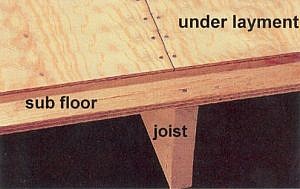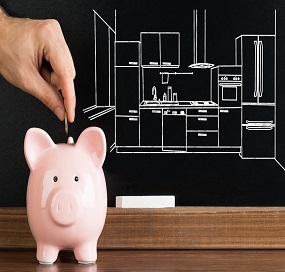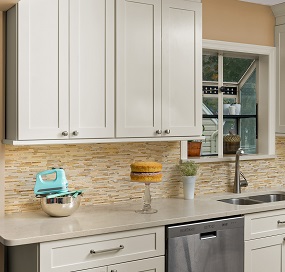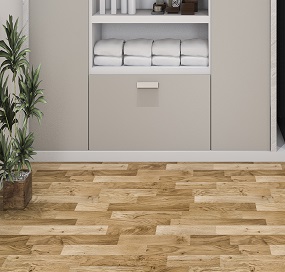Subfloor & Underlayment
INTRODUCTION
Floors play a vital role in supporting the various pieces of furniture that make up a home, and people spend a lot of time on floor selection, installation, and maintenance. But do you know the structure below the floors? In this article, we will mainly focus on the first two layers below floors: subfloors and underlayment. We will explain the details, including the types, functions, applications, etc.
BENEATH FLOORS
There are actually three layers below floors: underlayment, subfloors, and joists.
First Layer Below Floors: Underlayment
An underlayment is any piece of material that is placed between the bare floor and the flooring materials like mattresses, bedding, and carpets. These materials conceal the bare floor from the harsh external environmental elements. They also prevent the feet from getting into direct contact with bare floors.
Second Layer Below Floors: Subfloor
subfloor is simply a rough piece of material which is laid as a basis upon which the finished floor shall be installed. It basically complements the other kinds of flooring material. As hinted, it is hidden from the view of homeowners and occupants of the rooms and buildings wherein they are utilized.
Bottom: Joists
Joists cannot exactly be considered as a layer, although Joists is an important component that is used to sustain the entire flooring structure.
TYPES OF UNDERLAYMENT & TYPES OF SUBFLOOR
Underlayment can be classified as standard foam underlayment, upgraded foam underlayment, and combo underlayment.
Standard Foam Underlayment
Standard foam, as the name suggests, is a simple and thin layer of foam material which is placed over a subfloor. It is often paired with a moisture barrier to prevent the percolation of moisture into the room and floor.
Upgraded Foam Underlayment
It is an advanced form of the standard foam materials. Other than concealing the bare floors, it also serves as a noise reducing agent. It lasts longer than the standard foam and is thus a worthier purchase.
Combo Underlayment
This is basically a combination of foam and a film that blocks moisture. It may be overlaid atop a concrete subfloor or plywood. The underlayment serves the dual roles of conferring added comfort and suppressing capillarity.
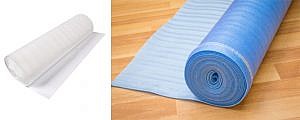
We can usually find these four types of subfloor in the market: Plywood, Pine, Flakeboard, and Particleboard.
Plywood
Plywood is a building material that is manufactured by laying several sheets of wood. The constituent sheets of wood are glued together to form one giant and strong material. It is by far the most common form of material which is used for this purpose of its flatness, strength, and evenness.
Pine
These are flooring materials that are made of the pine wood. This kind of wood is soft, malleable, and easy to shape to the desired outlook. It is mainly used in homes, apartments, and residential buildings due to its limited.
Flakeboard
As the name suggests, this kind of subflooring is made of flakes of wood that are pressed and glued together by a synthetic resin. The material is highly susceptible to water and is as such utilized in drier areas only.
Particleboard
Also called chipboard, is kind of subfloor is made of finer wood particles like sawmill dust, wood chips, and sawmill shavings. It is more compact than the flakeboard and is also better at resisting the percolations of moisture than the said material.
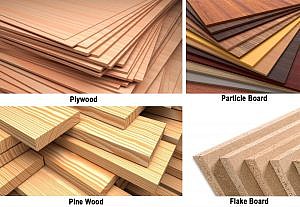
BENEFIT OF SUBFLOOR & BENEFIT OF UNDERLAYMENT
As the first layer below floors, underlayment is one of the most crucial material. The following is the benefit and application of underlayment:
Evens out Minor Subfloor Imperfections
Floors are generally uneven. The underlayment helps to level them by evening out the surfaces. This gives rise to added stability and reliability on your part. They can also absorb any excess stress and pressure to bring along added comfort.
Helps to Reduce Noise
Most people with laminate floors usually complain about the noise. The underlayment comes in to reduce the noise. This is because they absorb excess vibrations while walking on the floors. They are great for those installations that are sensitive to noise like libraries.
Keeps your Flooring Warm
Given that they can prevent the escape of heat and warmth, these materials also contribute to keeping the floors warm. They thus let you walk atop the floors barefoot without any worries at all. This is not to mention the extra comfort they yield.
Aids in Moisture Protection
These underlayment substances are generally impervious to water. They, therefore, act as a barrier to shield the percolation of water into the rooms or the floors underneath they are fixed. They thus safeguard the carpets and wooden furniture from dampening and possible damages.
Acts as a Cushioning Agent
They may also be used to cushion the floors by reason of the soft material makeup. This way, they absorb strong impacts and other injurious stress and impacts. They, in turn, make the surfaces where they are fixed quite comfortable to walk on.
Offers Added Support
Lastly, these materials also confer added support to the existing flooring materials. They mainly do this by resisting the possibilities of the existing flooring materials from warping or compressing excessively. They thus lengthen the lifespan of the floors in the long run.
Subfloor can be used to stabilize the foundation, create a firm base for subsequent flooring, improve the flooring overall lifespan, prevent moisture, and enhance support for overlaying furniture.
Stabilizes the Foundation
Subfloors, as has already been hinted, do add stability to the subfloors. They basically reinforce the strength and structural composition of the bare floors. In light of this, they improve the abilities of the floors to accommodate furniture and other occupants.
Creates a Firm Base for Subsequent Flooring
Floors are the foundations upon which the rest of the household activities are carried out. They have to be strong and reliable enough to be able to discharge this role well. The subfloors come in handy to enable this to take place.
Improves the Flooring Overall Lifespan
Floors that are complemented by subfloors last longer on average than those which do not. The subfloors are hence great to purchase and install as they see to it that a higher value for money is attained.
Prevents Absorption of Moisture
As stated repeatedly, these materials block or suppress capillarity. They, in so doing, prevent the percolation of underground moisture into the rooms. They are great especially for areas that are prone t dampness and clogging.
Enhances Support to Overlying Furniture
Given that they prevent moisture from percolating into the rooms as stated, they also safeguard the household furniture. This is mainly because the furniture is less likely to absorb the moisture and deteriorate in quality.
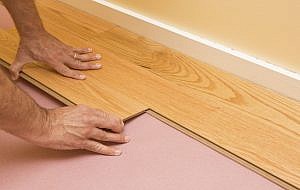
CONCLUSION
There you have it! You now know subfloors and underlayment very well. You may now proceed to make the right choice between these two materials. Why don’t you now go ahead and acquire at least one of these two construction materials? Remember also to share this information with others who might want it.

